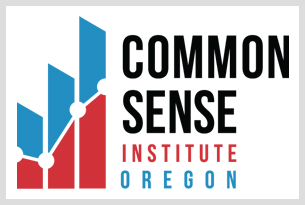DECEMBER 2023
Author: Erik Gamm All of the data discussed in this report come from the U.S. Bureau of Labor Statistics’ Consumer Price Index (CPI) database. This source no longer produces estimates of price levels in Oregon nor any metropolitan area within Oregon, so this report references data from the Pacific region (Alaska, California, Hawaii, Oregon, and Washington).
Prices Fell over the Last Two Months, yet Remain Elevated
Abnormally high inflation since early 2021 has cost the average Pacific-region family almost $22,000 over its 2020 spending. Between September and November 2023, however, prices in the Pacific region fell by 0.3%—the first period of deflation in almost a year—due in part to a substantial decrease in energy prices. The region’s price level is now 16.9% higher than it was at the start of 2021. Over the two months prior to this decline, the price level in the Pacific region grew by .8%; across the whole prior year, it increased by 3.5%, which is above the national average of 3.1%. The prices of transportation (-2.5%), entertainment (-1.08%), and education (-0.9%) decreased while those of food (0.25%), utilities and household fuels (0.47%), housing (0.52%), and medical care (0.46%) rose over the last two months.
- Between Sept ‘23 and Nov ‘23, prices in the Pacific region fell by 0.3%. This was the first two-month period of deflation since December 2022.
- From Nov ‘22 to Nov ‘23, the price of fuels and utilities grew by 7.4% in the Pacific region while the price of durables fell by 1.7%.
- In Oct ‘23 and Nov ‘23, the average Pacific-region household spent $2,069 more due to inflation—an average of $1,034 per month. The average Pacific-region household has spent $21,864 more since 2020 because of higher inflation.[i]
- Pacific-region inflation has outpaced the national average over the last 12 months—5% in the Pacific region compared to 3.1% across the U.S.
Of the nine minor U.S. regional consumer price indices tracked by the BLS, the Pacific region ranks seventh in total growth since January 2021. Since September, the Federal Reserve has held its key interest rate steady; if inflation continues to abate, the Reserve is unlikely to resume raising rates.
Inflation in the Pacific region over the last 12 months was 3.5%—0.4 of a percentage point above the national average (BLS CPI Survey)[ii]
- Average annual inflation between 2018 and 2020 was 4.3%. Since Nov ‘22, 3 of the categories shown on page 4 have grown by more than that and 10 have grown by less.
- The two price categories that grew the fastest over the last 12 months are fuels and utilities and services, which grew by 7.4% and 5.5%, respectively.
Price Changes in the Pacific Region over Previous Years
RESOURCES
[i] Impacts on household spending are generated by distributing the consumer expenditure estimates from https://web.archive.org/web/20220121095708/https://www.bls.gov/regions/midwest/data/consumerexpenditures_selectedareas_table.htm across individual months, weighting them according to their corresponding CPI levels, and adjusting them according to the latter’s growth history. [ii] https://www.bls.gov/cpi/

